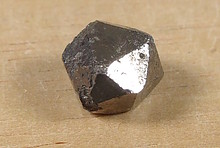Home PageAbout MindatThe Mindat ManualHistory of MindatCopyright StatusWho We AreContact UsAdvertise on Mindat
Donate to MindatCorporate SponsorshipSponsor a PageSponsored PagesMindat AdvertisersAdvertise on Mindat
Learning CenterWhat is a mineral?The most common minerals on earthInformation for EducatorsMindat ArticlesThe ElementsThe Rock H. Currier Digital LibraryGeologic Time
Minerals by PropertiesMinerals by ChemistryAdvanced Locality SearchRandom MineralRandom LocalitySearch by minIDLocalities Near MeSearch ArticlesSearch GlossaryMore Search Options
The Mindat ManualAdd a New PhotoRate PhotosLocality Edit ReportCoordinate Completion ReportAdd Glossary Item
Mining CompaniesStatisticsUsersMineral MuseumsClubs & OrganizationsMineral Shows & EventsThe Mindat DirectoryDevice SettingsThe Mineral Quiz
Photo SearchPhoto GalleriesSearch by ColorNew Photos TodayNew Photos YesterdayMembers' Photo GalleriesPast Photo of the Day GalleryPhotography
╳Discussions
💬 Home🔎 Search📅 LatestGroups
EducationOpen discussion area.Fakes & FraudsOpen discussion area.Field CollectingOpen discussion area.FossilsOpen discussion area.Gems and GemologyOpen discussion area.GeneralOpen discussion area.How to ContributeOpen discussion area.Identity HelpOpen discussion area.Improving Mindat.orgOpen discussion area.LocalitiesOpen discussion area.Lost and Stolen SpecimensOpen discussion area.MarketplaceOpen discussion area.MeteoritesOpen discussion area.Mindat ProductsOpen discussion area.Mineral ExchangesOpen discussion area.Mineral PhotographyOpen discussion area.Mineral ShowsOpen discussion area.Mineralogical ClassificationOpen discussion area.Mineralogy CourseOpen discussion area.MineralsOpen discussion area.Minerals and MuseumsOpen discussion area.PhotosOpen discussion area.Techniques for CollectorsOpen discussion area.The Rock H. Currier Digital LibraryOpen discussion area.UV MineralsOpen discussion area.Recent Images in Discussions
Mineralogical ClassificationIMA 2017-046 = barwoodite
13th Dec 2018 10:41 UTCMarco E. Ciriotti Manager
▪ Kampf, A.R., Celestian, A.J., Nash, B.P. (2018): Barwoodite, Mn2+6(Nb5+,□)2(SiO4)2(O,OH)6, a New Member of the Welinite Group from Granite Mountain, Arkansas. Canadian Mineralogist, 56, 799-809.
Abstract:
The new mineral barwoodite (IMA2017-046), Mn2+6(Nb5+,□)2(SiO4)2(O,OH)6, was found in miarolitic cavities at the Big Rock quarry (also known as the 3M quarry), Granite Mountain, Little Rock, Pulaski County, Arkansas, USA. It is interpreted as crystallizing from pegmatitic fluids. The mineral occurs as brownish-red hexagonal plates up to 3 mm in diameter. Crystals are transparent with vitreous luster and light orange streak. The tenacity is brittle, the Mohs hardness is approximately 3½, the fracture is curved, and there is one perfect cleavage on {001}. The calculated density for the empirical formula is 4.227 g/cm3. Barwoodite is optically uniaxial (–) with ω = 1.873(3) and ε = 1.855(5) (white light) and is nonpleochroic. Electron microprobe analyses (WDS mode) provided the empirical formula Mn2+6(Nb5+0.94Fe3+0.18Mn3+0.11□0.77)Σ2(SiO4)2[O3.58(OH)2.42]Σ6. The six strongest X-ray powder diffraction lines are [dobs Å(I)(hkl)]: 3.125(95)(11-1), 2.858(56)(021), 2.688(57)(210), 2.349(81)(300), 1.7930(100)(212), and 1.5505(75)(140,-3-21). Barwoodite is trigonal, P3, a 8.2139(10), c 4.8117(4) Å, V 281.14(7) Å3, and Z = 1. The structure determination for barwoodite (R1 = 0.0246 for 746 reflections with Io > 2σI) shows it to be isostructural with welinite, franciscanite, and örebroite. Together, these four minerals comprise the welinite group.
22nd Dec 2018 23:01 UTCTravis Olds Expert




Mindat.org is an outreach project of the Hudson Institute of Mineralogy, a 501(c)(3) not-for-profit organization.
Copyright © mindat.org and the Hudson Institute of Mineralogy 1993-2024, except where stated. Most political location boundaries are © OpenStreetMap contributors. Mindat.org relies on the contributions of thousands of members and supporters. Founded in 2000 by Jolyon Ralph.
Privacy Policy - Terms & Conditions - Contact Us / DMCA issues - Report a bug/vulnerability Current server date and time: April 27, 2024 01:12:07
Copyright © mindat.org and the Hudson Institute of Mineralogy 1993-2024, except where stated. Most political location boundaries are © OpenStreetMap contributors. Mindat.org relies on the contributions of thousands of members and supporters. Founded in 2000 by Jolyon Ralph.
Privacy Policy - Terms & Conditions - Contact Us / DMCA issues - Report a bug/vulnerability Current server date and time: April 27, 2024 01:12:07











